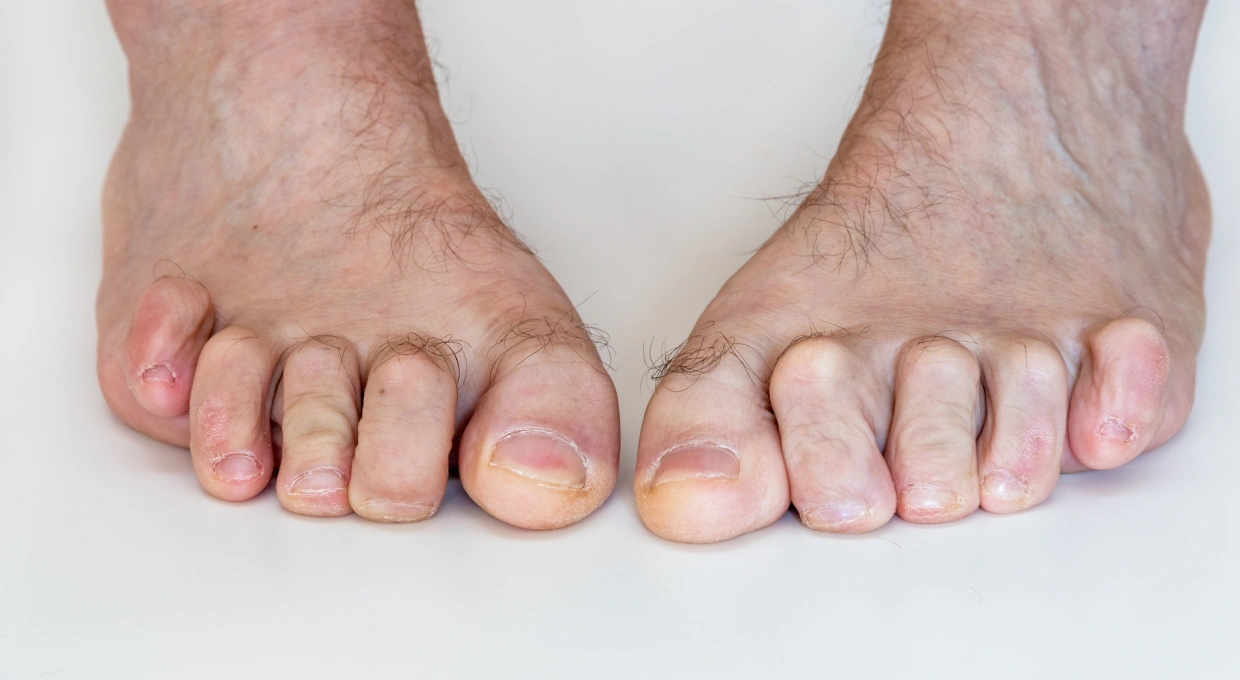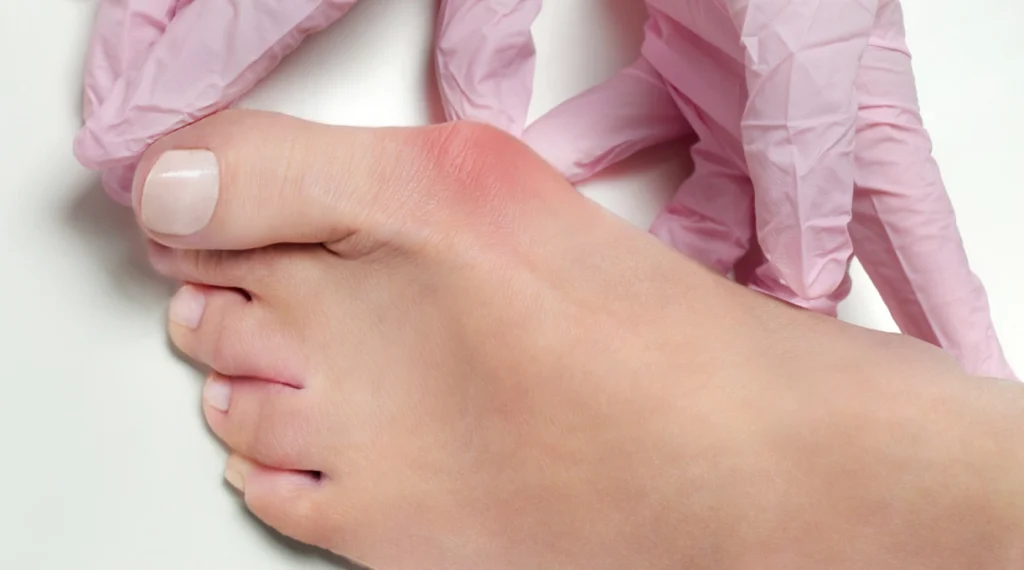Crooked or deviated toes, known as clinodactyly, are a deformity that affects many people. This condition can originate from various causes, such as prolonged use of inappropriate footwear, genetic predisposition or diseases such as arthritis. If left untreated, it can cause pain and affect quality of life.
Causes of clinodactyly
- Improper footwear: Wearing narrow or high-heeled shoes puts pressure on the toes, forcing them into an abnormal position. This is a common cause in people who prioritize fashion over shoe functionality.
- Genetics: There is a genetic predisposition in some people that increases the likelihood of developing clinodactyly. If one family member has this condition, it is more likely that others will also develop it.
- Underlying diseases: Conditions such as rheumatoid arthritis and neurological problems can weaken the muscles and ligaments of the feet, leading to toe deviation.
Symptoms and diagnosis
Symptoms of clinodactyly may include pain, swelling, redness, and callus formation due to constant rubbing with footwear. These symptoms can worsen if corrective measures are not taken. A podiatrist can make an accurate diagnosis by physical examination and, if necessary, x-rays to assess the severity of the deformity.
Treatments available
There are several options for treating clinodactyly, depending on the severity of the condition:
- Conservative methods:
- Change of footwear: It is essential to wear wider and more comfortable shoes to avoid pressure on the toes.
- Orthoses: The use of splints or silicone pads helps to align the fingers and relieve pressure on the joints.
- Specific exercises: Stretching and exercises to strengthen the muscles of the foot can correct the position of the toes in mild cases.
- Physical therapy: Sessions with a physical therapist can improve mobility and relieve pain.
- Surgical treatments:
- Minimally invasive surgery: In more advanced cases, surgery is an effective option. This type of surgery is low risk and allows for a faster recovery, making it an attractive option for those who do not find relief with conservative treatments.
Prevention and recommendations
To prevent clinodactyly or prevent it from worsening, it is recommended:
- Proper use of footwear: Choose shoes that provide enough room for the toes and avoid compression.
- Maintain general health: Control conditions such as diabetes or arthritis, which can contribute to finger deformity.
- Regular exercise: Perform stretching and strengthening exercises for the feet as part of your daily routine.
Conclusion
Clinodactyly is a condition that, although common, should not be taken lightly. Early intervention, either through lifestyle changes or medical procedures, can prevent further complications and significantly improve quality of life. If you experience symptoms of crooked or deviated toes, it is crucial to consult a podiatrist to receive a proper diagnosis and explore the best treatment options. This article has been updated to provide the most relevant and practical information as of August 23, 2024. If you need more details or personalized advice, do not hesitate to visit Clínica San Román, where a team specialized in podiatry will be happy to help you.



